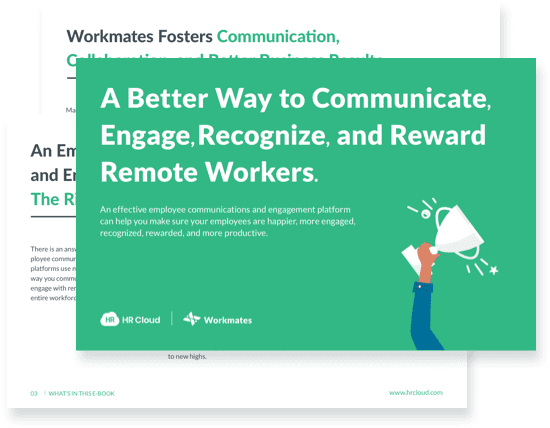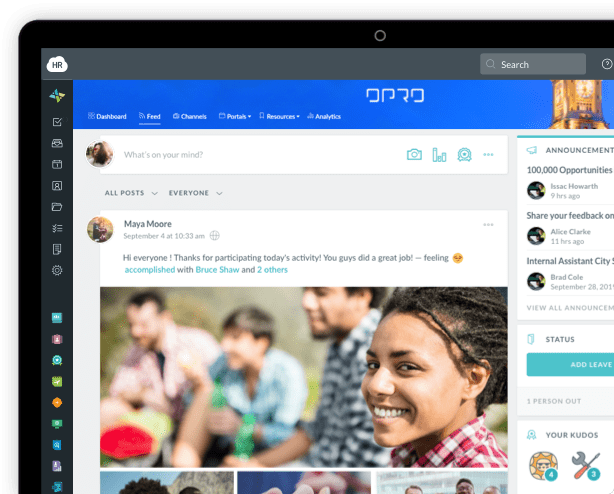Those of us who work in human resources talk about company culture a lot. A heck of a lot. But let’s face it, for all the talk, company culture is tricky to define.


If you enjoyed this post, sign up for a Free Trial of our software!
Despite the murkiness that exists, many HR leaders are tasked with “changing” culture. In fact, I’ve seen a ton of postings for HR leadership jobs where “build and maintain company culture” is included in the list of essential functions.
That’s like telling the HR Leader to pin Jell-O to a tree.
Culture is a living organism that is continuously influenced by individuals. It is not defined, owned, or controlled by one person or by one group. The HR Department does not create or own culture.
Auditing and Operations Administrator of Medlinks Cost Containment, Inc. and Medlinks Staffing, LLC.
“I can’t say this enough: Without HR Cloud, we could not have communicated important project information or demonstrated that we could take on an increased workload. We now provide real-time workforce statistics and productivity reports that have helped us win more projects.”
Tweet: Culture is a living organism that is continuously influenced by individuals. @HRCloud
Rather, company culture is the collective behavior of all the people who are part of the organization. It’s formed by vision, norms, beliefs, environment, symbols, and traditions. It includes mission, articulated company values, and, perhaps most importantly, the practices.
Culture is impacted and affected by organizational structure, processes and controls. It’s what people actually do. It’s how people actually act.

Is Cultural Change Possible?
I once sat in a leadership team meeting where the CEO said, “Communication is one of our corporate values. We need to make sure our culture supports that.” The group spent time brainstorming ideas that would show employees the company had a “culture of communication.” Tasks were assigned, the CEO committed to recording a video to share with employees, and they considered it done. Voila.
It was a waste of 20 minutes and neither effective nor sustainable.
Quite often in organizations we realize that we want, or need, to make some wholesale changes. We may desire to shape new behaviors, promote new ways of thinking to spur on innovation or define a culture of learning in order to engage and develop our employees. As anyone who has attempted a change management initiative of this magnitude will attest, it’s easier said than done.
Changing culture, of course, includes a commitment from the leadership team. Leaders must clearly articulate why change is necessary and their vision for making changes. Most importantly, leaders must be fully committed to changing their own actions and behaviors.
They also need to understand the current state.

To learn even more about managing remote teams and keeping employees working at home highly engaged, download our ebook now.
Download nowConducting a Cultural Assessment
There are tools that companies can use to identify both their current and desired culture. One of the most well-known of these tools is the Organizational Culture Assessment Instrument (OCAI) developed by Kim Cameron and Robert Quinn at the University of Michigan. Cameron and Quinn analyzed 39 organizational effectiveness indicators and identified two key dimensions:
1. Internal Focus and Integration vs. External Focus and Differentiation
2. Stability and Control vs. Flexibility and Discretion
A survey or a study may also provide an understanding of existing culture—an understanding that is not formed by assumptions but is truly based on the beliefs and behaviors exhibited in the organization. This is not the same as conducting an engagement study or an opinion survey. Rather, a cultural assessment is used to understand deeply rooted norms and values, drivers of behavior, and existing characteristics.
Conducting this assessment includes reviewing the various components of culture, including environment, traditions, social relations, incentives, and values. Are employees happy in the space they're in? Are there certain holidays or occasions, both external and internal, that are celebrated routinely by the company as a whole? Are workers communicative and social, both in-person and online using employee engagement software? Are rewards offered via an employee rewards system? And are the values of the company coming through the employees themselves?
Ultimately, by gaining this understanding, you can determine where gaps exist between the current state and the desired culture.
A cultural assessment is the first step in getting the answer to the question, “Is what we say we are truly what we are?”
Then, and only then, can a purposeful shift begin towards a culture that is aligned with business strategy while also being meaningful to individual employees? After all, your culture can be a unique differentiator that influences talent attraction, retention, motivation, and employee engagement.
Interested in more HR systems to assess and cultivate culture at your company? Look no further!
About Author:
This article is written by the Marketing Team of HR Cloud. HR Cloud is a leading global provider of Applicant Tracking, Onboarding, Offboarding, Communications, Engagement, Recognition, and Financial Wellness solutions. Its powerful and user-friendly software eliminates manual/paper processes, increases employee productivity and engagement, improves time and cost savings, and reduces regulatory compliance risk.

Keep Reading
Balancing Technology and the Human Touch in Employee Engagement
Companies are taking employee engagement very seriously because it is one of the ways of
Building Strong Teams: The Power of Team Bonding Exercises
Never overestimate the power of collaboration as a core element of effective team


